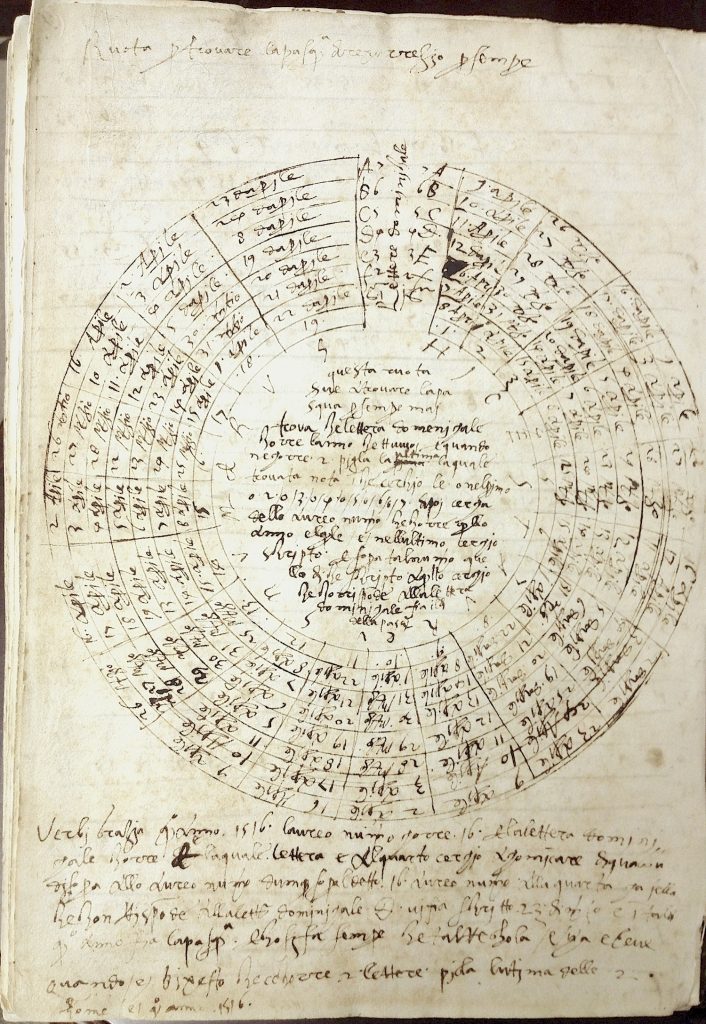
As we begin the year 2016, one incunable in the Rare Book Collection offers particular resonance for “timely” meditations: Nicolas Jenson’s 1475 printing of St. Augustine’s De civitate Dei, annotated exactly five hundred years ago in 1516, with a manuscript calendar for that year and lunar calculations.
The volume is one from the personal collection of alumnus Dr. Frederic M. Hanes (A.B. 1903), who led his siblings to establish the Hanes Foundation for the Study of the Origin and Development of the Book in 1929. The RBC traces its beginning to that foundation, which enabled the purchase of nearly 400 incunabula. Following Dr. Hanes’s death in 1946, the Jenson imprint and other high spots that he collected came to UNC.
The book is Jenson’s only edition of St. Augustine’s magnum opus, which sought to vindicate Christianity in the sack of Rome and delineated the existence of two realms: “the City of God” and “the City of Man.” The French-born printer Jenson, famous today for his roman type, chose instead to set the text of this Christian classic, so important in the Middle Ages, with a gothic font, perhaps because of its religious content. The book is noteworthy for stating the printer’s name on the first page of text, the earliest such instance in type, anticipating the invention of the title page.
The Hanes RBC copy is also one of a small number from the edition that features a setting of type for the colophon statement where names are elided: “Nicolao ie[n]son gallico: Petro moze[n]icho principe.” – “by Nicolas Jenson, Frenchman: for Prince Peter Mocenigo.”
Specific only to the RBC copy are its manuscript annotations and addendum. On the verso of leaf 16 are records of two purchases of the volume: first in 1516 by Nicolaus Fabbrinus, and then in 1691 by one F. M. Arrighi. Two handwritten leaves at the end, most likely Fabbrinus’s work, discuss in Latin and Italian the epact—or the number to be added to the first day of the year to obtain the moon’s age, 15 in 1515, 26 in 1516, and 7 in 1517—and provide a calendar for the year 1516 and a wheel for determining Pascha, or Easter, a movable feast that could fall in March or April.

The wheel is divided according to the 19-year lunar cycle, with 19 numbered chords. ”Hic est aureus numerus,” written inside the wheel’s center, indicates that each of these is a “golden number”—as the ordinal number of a specific year in the cycle was termed beginning in the Middle Ages. The golden number is used in conjunction with the Dominical letter (top center) to find the date of Pascha. The Dominical letter designates the Sundays of a year in a cycle where days of the week are lettered A-G, and January 1 is always A.
This manuscript exposition operates under the Julian calendar in use before the Gregorian calendar reform of 1582, a topic of last year’s New Year blog post. Keeping track of the sun, the planets, the moon, the stars, and time has been a central activity for all societies, whether the ancient Maya, the Christian West, Revolutionary France, or our global technological present. Look up tonight; it will be a full moon in Chapel Hill.
